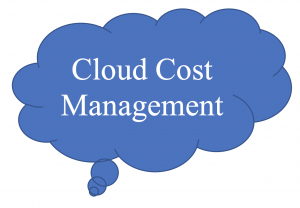Best practices for Cloud cost Optimization

Cloud computing is the driver of digitization because firms expect competitive advantages and massive financial savings from moving their business to the cloud. But they are often unaware that they end up paying more for their cloud infrastructure than they have to. This is often due to a lack of cloud governance, a lack of global overview of the resulting cloud costs, and/or rising prices for increased storage capacities. A study by Gartner shows that in many cases, the cloud costs of companies are up to 70 percent higher than what they would need. This leads to massive profit losses.
Therefore, cost management for multi-cloud environments is a crucial step not to be ignored. A wide range of options is available for optimization – if they are properly understood and used. This guideline clarifies what is important and which criteria are essential.
Scalability and cost transparency, such as the “pay-per-use” principle common to cloud providers, are two of the main arguments in favor of the cloud. Accordingly, the cost savings for small and medium-sized companies is the main argument for migrating their IT environment to the public cloud. However, this thesis is only true if they keep an eye on the topic of cost optimization before, during, and above all after the migration. The cost-optimized use of IT resources in the cloud is only possible if the company hires someone who keeps an eye on numerous factors such as the number of users, budgets, storage space, and instances used. In other words: without someone in charge who knows what to look for in cost-optimized cloud usage and how to proceed in cases of budget overruns, it becomes expensive.
Waste management, identifying unused cloud resources, and avoiding unnecessary spending. It sounds easy at first, but with typically several hundred thousand cloud resources, it is not possible to find out manually which resources are not required. By comparing billing data with monitoring data, tools identify potentially redundant cloud spending. In addition, among all the hundreds of thousands of cloud resources, those that are not needed at night or at the weekend can be identified. A distinction can also be made between productive and non-productive environments. The cloud architects and DevOps teams can make informed decisions about which cloud services are redundant and which are not.
Workload management, The costs for virtual machines are quite different for individual providers. The designation of the workloads in the cloud, and the offers and configurations of the cloud providers also vary significantly. This makes it difficult to compare offers.
But the price of workloads isn’t the only reason to choose a provider. With ready-made cloud services, cloud providers try to bind customers to their cloud platform. And indeed, their offers may seem attractive because the provider promises to care for maintenance and updates.
To help in decision-making, tools can indicate which cloud instances are most likely to cover a given workload. Usually, there are between 40 and 50 similar configurations that could be suitable in principle. If the tool knows the configurations of existing on-premises servers, it can also determine which cloud instances they could be replaced with. This enables comparisons to be made as to which cloud offerings are most suitable in terms of price/performance ratio.
Rightsizing computing services, there are a number of right-sizing tools that provide more or less good suggestions for sizing cloud servers so that they are the right size for actual use. Right-Sizing also helps with cloud optimization, which means achieving peak performance from the resources you are paying for. Another special benefit of the rightsizing compared to the data center is its elasticity. This means if you need to scale up for a few days and then scale back down, you’re able to continuously right-size your infrastructure to match your needs so you’re not stuck with one size.
